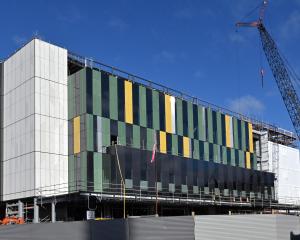Glenorchy Community Association chairman John Glover said while the two reports commissioned by the Otago Regional Council presented some new information concerning risk assessment and options for mitigation, question marks remained over the benefits of each option and how residents were supposed to value them.
"As a community, we want to know, well, what will be the most effective thing in reducing the risk?" he said.
"They’ve put some cost information around some of the strategies, but how do you know what’s worth spending the money on?
"That’s really disappointing and we will be pressing the ORC to do that because we probably need that information to make some objective decisions on what needs doing.”
Completed by consultancy firms Beca Ltd and Damwatch Engineering Ltd earlier this year, the two reports were presented to councillors in a workshop on Thursday.
Beca’s study, which assessed the risk of natural hazards on Glenorchy and Kinloch, found there was an ‘‘acceptable" level of risk to human life in the event of flooding of the Rees River and Lake Wakatipu, but that some properties were at ‘‘significant risk" of damage.
Mr Glover questioned the decision to use such "alarming” labels that could cause unnecessary panic.
"It’s misleading to include a table with all the high-risk red boxes without making it very clear that these are the absolute worst case scenarios that might have existed if nothing is done about them.
"As a community, we don’t want people to be worried, we don’t want people to be stressed, we don’t want insurers and mortgage lenders seeing some of this stuff out of context.”
He said the second report, which presented potential options for mitigating natural hazard risks, would have benefited from more detail on how effective each option would be at reducing the risks outlined in the first report.
"If they want to ask us what we think of spending ratepayer money on, for example, raising the floodbank or putting rocks along the edge of the road, we need to have some idea of what’s the benefit.
"I think that’s really key.”
Thursday’s workshop revealed the council would have ongoing discussions with Queenstown Lakes District Council and Emergency Management Otago staff about the implications of the report and the "roles and responsibilities” of each in implementing any strategy.
The council will also continue its community engagement with public meetings at Glenorchy Hall on September 10 and 11.
Council staff are developing a draft natural hazards adaptation strategy for the head of the Lake Wakatipu area which they hope to present to the council by the end of the year.











